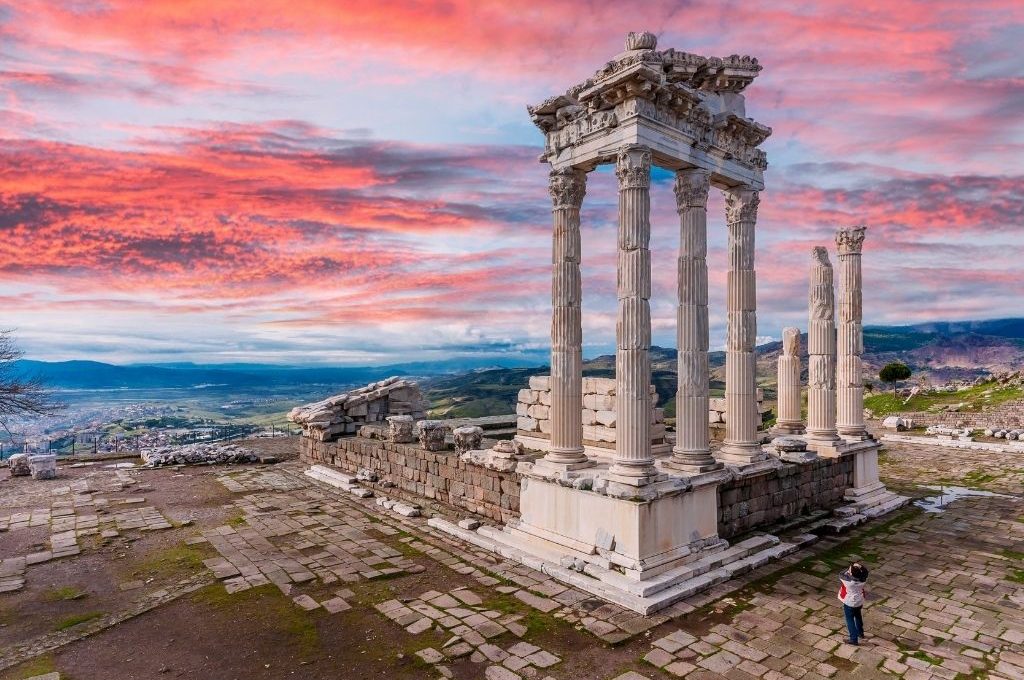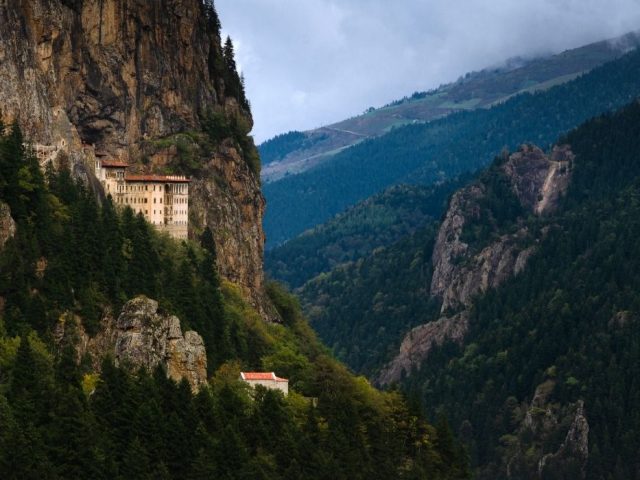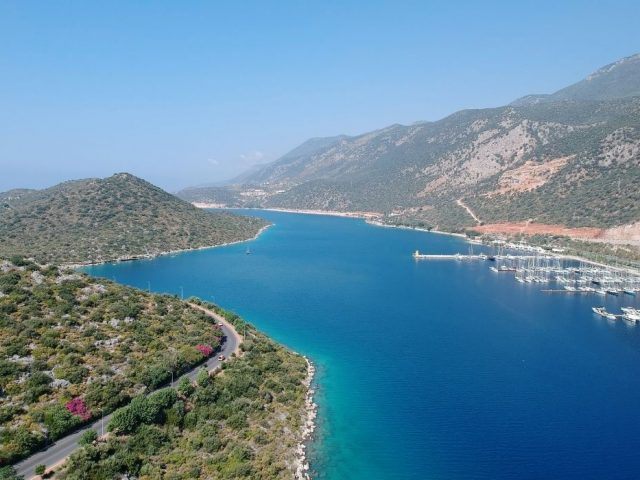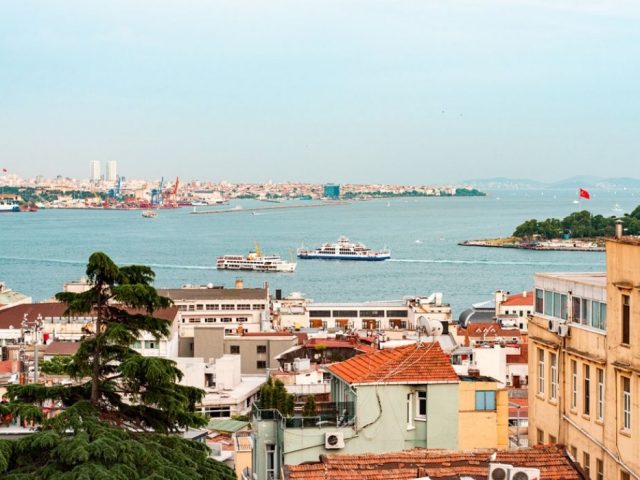Welcome to the city of parchment, Bergama!
The moment you step into this city, you embark on a historical journey. Bergama is the first place in Izmir to be included in the UNESCO World Heritage List, and it holds the 13th place within Turkey. This is a city nourished by archaeology and mythology. Its original name is Pergamon, or Pergamon Ancient City. It has achieved significant milestones in Anatolia. For example, parchment was born within the walls of this city. Turkey’s first local festival took place in Bergama. When exploring Bergama, you will witness so much history among the ancient ruins. Get ready!
Before we start, let’s remind you: don’t forget to download the Piri Guide mobile app to explore Bergama step by step with your personal and digital tour guide!
Where is Pergamon
Pergamon is a district connected to İzmir. It is located in the northwest of the Aegean Region. Aliağa is to the south, Ayvalık and Dikili are to the west. In the north, it is bordered by İvrindi and Burhaniye. It is close to Soma and Kırık in the east. Bergama, with its coastline, is approximately 100 km away from the city center of İzmir.
How to Get To Pergamon
You can reach Pergamon not only by air and land but also by train. After arriving in Izmir, there are shared taxis departing from the Izmir Bus Terminal. These special shared taxis to Pergamon take about 1-1.5 hours. Since these special shared taxis at the terminal depart every 20 minutes, the journey is not difficult at all. If you prefer air travel, Izmir Adnan Menderes Airport is 130 km away from Pergamon. You can take the İZBAN train to Aliağa from the airport and then transfer to ESHOT buses to reach Pergamon. Another option is to use shared taxis between Pergamon and Izmir.
When to Visit Pergamon?
Pergamon is generally under the influence of the Mediterranean climate. Winters are mild and rainy, while summers are hot and dry. During the summer months, tourists flock to Pergamon to see its ancient cities. It might be better not to go in summer to escape both the hot weather and the crowds of tourists. As a traveler, you can visit Pergamon in September and October, a period when the weather is more moderate. In addition, April and May are also quite ideal for a visit.
Bergamon Places To See
Pergamon Acropolis
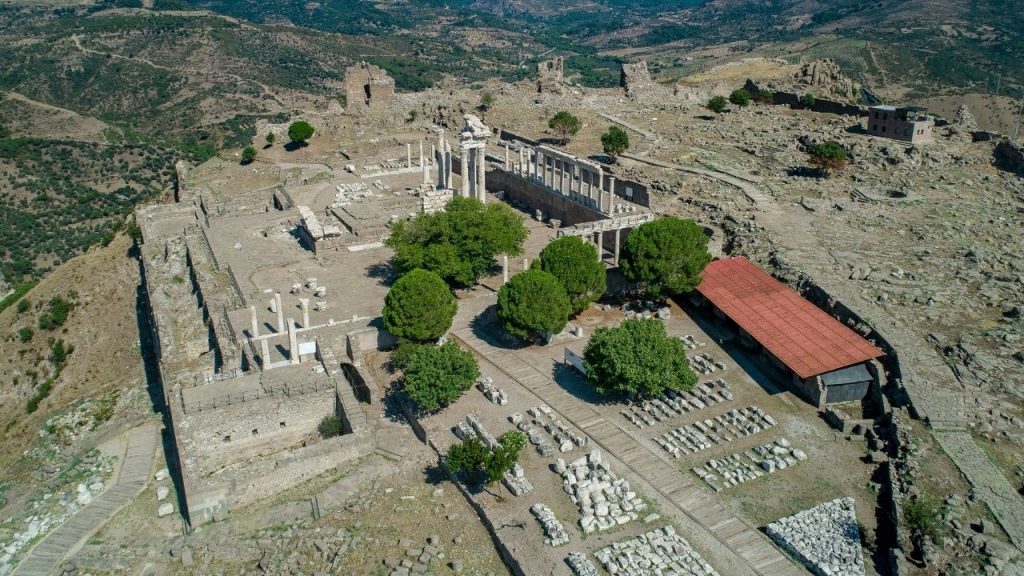
Acropolis means ‘city above.’ Locally, the Pergamon Acropolis is called ‘castle hill.’ It was established during the Hellenistic period, 350 meters above ground. The establishment of the Acropolis dates back to the time of Alexander the Great. According to the story, one day, Alexander the Great’s generals started to argue about inheritance. One of the generals managed to take control of Pergamon. He not only took control but also decided to move Alexander the Great’s treasury to this hill. His aim was to protect the treasury, thinking that no one would bother to climb the hill (Well, we can’t say it was a logical decision). That’s how Pergamon was established.
For 160 years, the Ancient City was under the rule of an independent kingdom. However, an interesting move came with the death of the last king, King Attalus III. The ruler Attalus left a will behind. In this will, he wrote:
‘Leave my kingdom to the Roman Empire.’
Pergamon Library
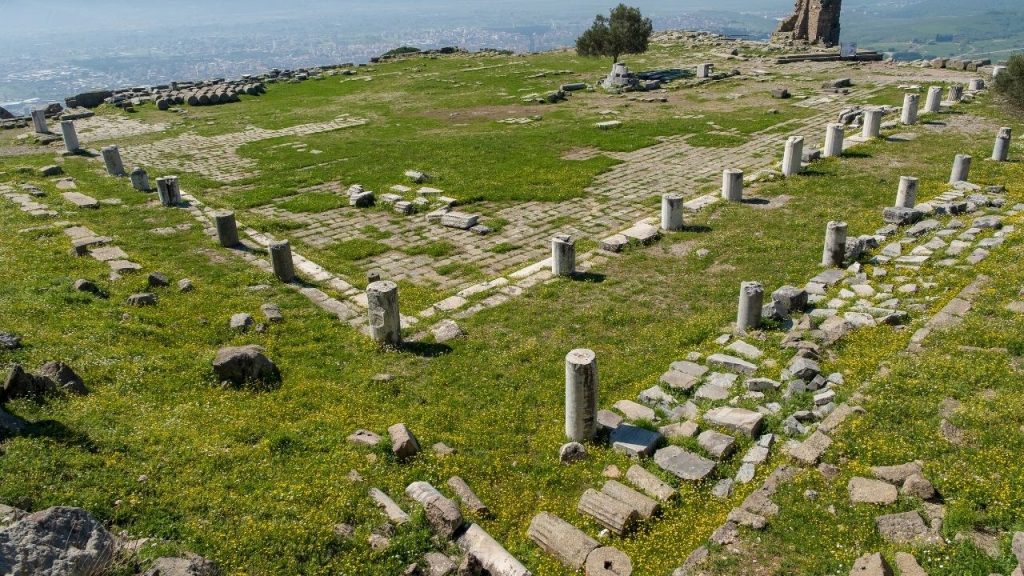
After the Library of Alexandria, the world’s second-largest library is in Pergamon. There was a fierce cultural competition between Alexandria and Pergamon. The birth of parchment paper itself stemmed from this rivalry.
Pergamon ended up losing in the cultural battle between these two cities. In ancient times, only papyrus paper was known, and it was only available in Egypt. Pergamon used to consistently purchase papyrus from Egypt, surpassing Alexandria. When the other side didn’t appreciate this, they cut off the export of papyrus to Pergamon. The rulers in Alexandria, Egypt, were envious of Pergamon’s cultural success. In response, Pergamon had to invent parchment paper from animal skins.
The Temple of Athena
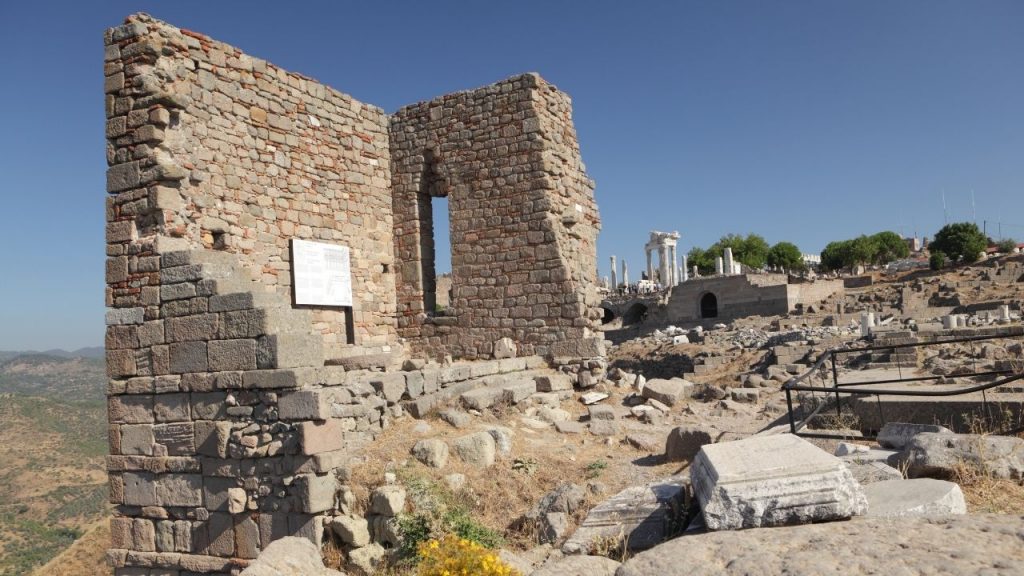
When you descend from the stairs of the Trajan Temple to the lower terrace, the Temple of Athena welcomes you. This area alone shows us why Pergamon is referred to as the “city of terraces.” Pergamon, in general, has a very distinctive architecture because it provides a concrete example of how to achieve maximum efficiency from a limited space. Like in the Temple of Athena, the city is oriented to the west through terrace construction. There are two reasons for this: sunset and the summer breeze.
Athena is the goddess of victory, war, and wisdom. What we should focus on here is Athena being the goddess of wisdom. The Temple of Athena is located right next to the library. To paint a broader picture, the library is above, and the temple is just below it. This positioning is not at all coincidental, as it is believed that the people of Pergamon chose this location considering the connection between Athena and the library.
The Ancient Theater of Pergamon
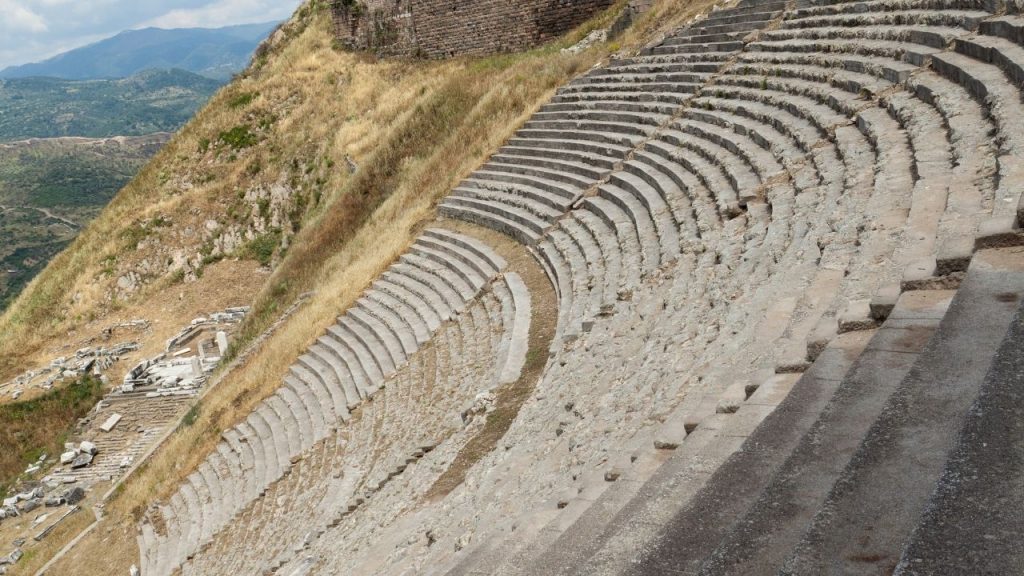
Wherever you go in Anatolia, no theater resembles the one in Pergamon. This place is unique because it follows the Greek style, not the Greco-Roman style. You might ask, “Okay, but why is this important now?” It’s important because the Ancient Theater of Pergamon is the steepest theater in Anatolia. It carries completely archaic Greek style features, carved into a slope. It has a total capacity of 12,000 people.
The factor of the meltem wind mentioned in the Athena Temple is also present here. The theater is designed against the meltem wind. The wind’s cooling effect on the audience is one of the reasons. But the most important reason is the sound spreading upward through the wind. The Ancient Theater of Pergamon is much older than most theaters you have encountered or will encounter. Therefore, you may notice that there is no fixed stage. In ancient times, portable stages were built, and when a play was to be performed, they were installed. The concept of a fixed stage came in the Roman period.
The Red Basilica
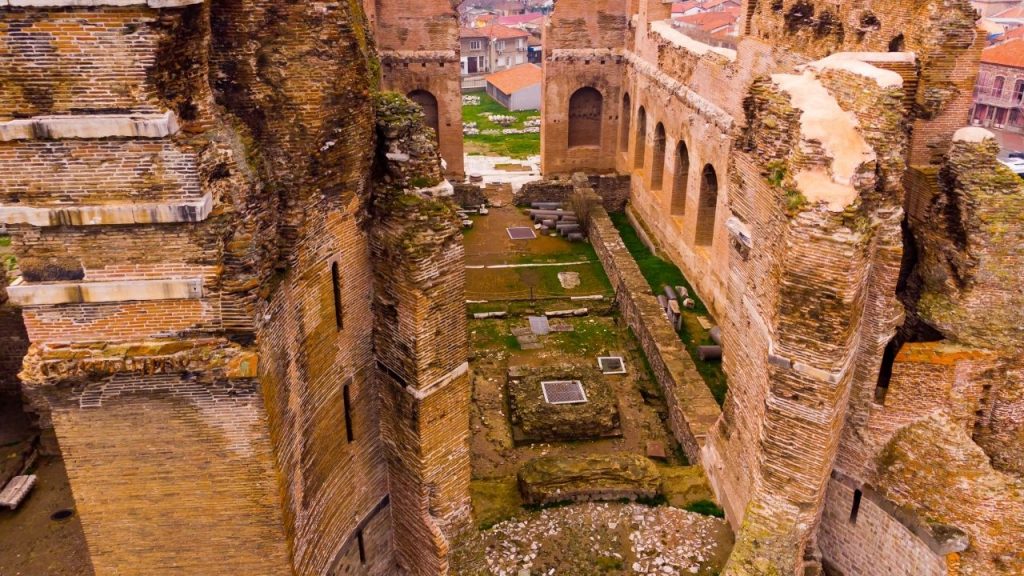
The Red Basilica, or alternatively known as the Temple of Serapis, is a massive structure built from red bricks. It was constructed in the 2nd century AD. It is called the Red Basilica due to its construction with red bricks. However, there is a different reason for calling it the Temple of Serapis. During that period, the Romans were trying to improve relations with the Egyptians, especially Egyptian merchants. To strengthen their ties, they established a temple dedicated to the invented goddess Serapis. The goal was to say, “Look, we even opened a temple for your god!” as a gesture of goodwill.
Bergama Archaeology Museum
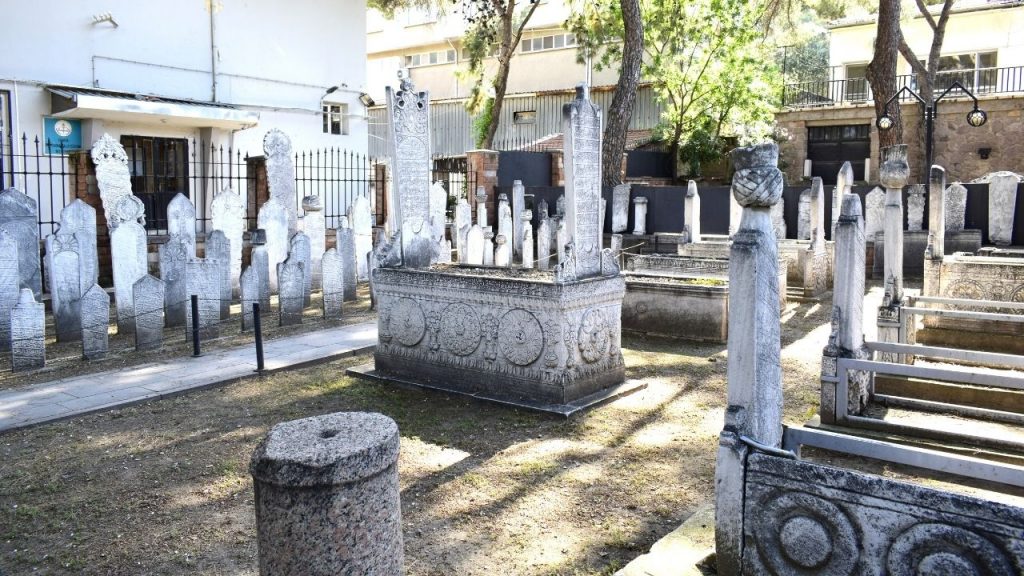
Bergama Archaeology Museum is an extremely small, single-story structure. There are artifacts from two ancient cities here: Pergamon and Allianoi, which was submerged under the dam waters in recent history. In the museum, you can find items collected during excavations, including depictions of gladiators and roosters, which are not commonly found in other ancient cities.
When you enter the museum, we recommend carefully examining the sculptures on the stones. It is evident that they were crafted with great precision. This is because one of Anatolia’s three sculpture schools is located in Pergamon. The other two are in Tralles (Aydın) and Aphrodisias. However, the oldest among them is the Pergamon Sculpture School.
If you are fan of ancient cityies make sure to check out our Ephesus guide.

